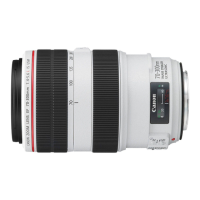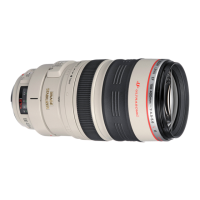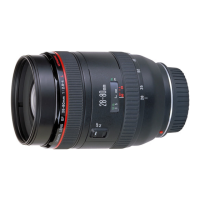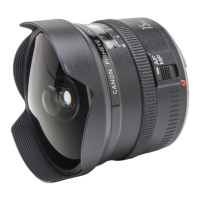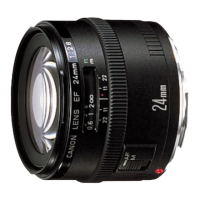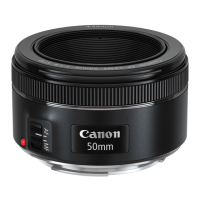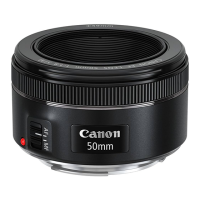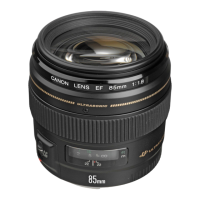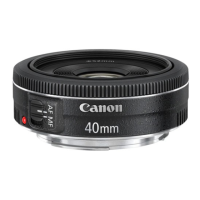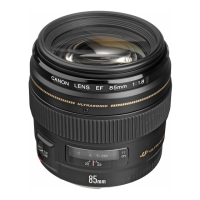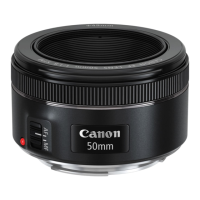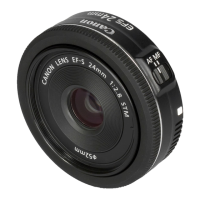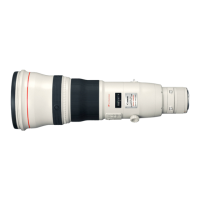
Do you have a question about the Canon EF 800mm f/5.6L IS USM and is the answer not in the manual?
| Lens type | Telephoto lens |
|---|---|
| Component for | MILC/SLR |
| Fixed focal length | 800 mm |
| Lens mount interface | Canon EF |
| Maximum aperture number | 5.6 |
| Closest focusing distance | 6 m |
| Lens structure (elements/groups) | 18/14 |
| Camera brands compatibility | Canon |
| Length | 461 mm |
|---|---|
| Weight | 4500 g |
| Diameter | 162 mm |
| Filter size | 52 mm |
Provides the equivalent effect of a shutter speed four stops faster and has a mode for tracking moving subjects.
Achieves outstanding image quality using fluorite, super UD, and UD lens elements.
Features a quick, quiet ultrasonic motor for AF and allows manual focusing after AF.
Includes AF Stop, Focus Preset, compatibility with extenders, and a round aperture for blur.
Features a tight seal for dust/drip-proof performance and uses magnesium alloy for lighter weight.
Avoid looking at the sun through the lens; do not leave lens uncovered in sunlight to prevent fire.
Do not stand on or stack lens cases to prevent injury from falling.
Acclimate lens gradually between different temperature environments using an airtight bag.
Avoid excessive heat, like in a car, as high temperatures can cause malfunction.
Place lens rear-up to protect surface and contacts; keep contacts clean to ensure proper operation.
Align the lens mount index and dust cap index, turn clockwise to attach.
Thread the strap through the mount, back through the clasp, and pull tight to secure.
Set switch to AF for autofocus; set to MF and turn ring for manual focus.
Allows manual focusing by turning the ring even after AF in ONE SHOT AF mode.
Choose from 6m-infinity, 6m-20m, or 20m-infinity for shorter AF times.
Compensates for infinity focus shift due to temperature; align vertical L mark with distance indicator.
Prevents stray light and protects the lens front from elements like rain, snow, or dust.
Loosen locking knob, fit hood onto mount, tighten knob; reverse for removal.
Temporarily pauses AF; works in Al Servo AF mode and can be customized via camera settings.
AF resumes if shutter is half-pressed after button release; specific camera models may differ.
Allows instant focus at a preset distance, usable in AF and MF modes.
Set switch to ON, focus to desired distance, press preset button; beeper indicates success.
Turn playback ring to focus; beeper sounds on preset. Avoid touching shutter button while turning ring.
Set the STABILIZER switch to ON. If not used, set to OFF.
MODE 1 corrects all directions for stills; MODE 2 compensates for panning shots.
Press shutter button halfway; ensure viewfinder image is stable before taking the picture.
Effective in dark areas, prohibited flash locations, or uncertain footing.
Primarily used for panning subjects in motion.
Does not compensate for subject movement, bulb setting errors, bumpy roads, dramatic panning, or removing lens during operation.
Stabilizer uses more power. It can operate when a custom button is assigned to AF.
Tripods also stabilize; IS may be better off depending on conditions. Works with extension tubes.
IS works with EF1.4X II/EF2X II on specific camera models; notes on distortion and custom functions.
Remove by pressing lock buttons; install by pushing down until it clicks.
Lift retaining frame, trim filter, mount it, and return frame to closed position.
EF1.4X II/EF2X II change focal length, aperture, angle of view, and magnification.
Details manual focus, attachment order, single extender use, exposure compensation, and AF speed impact.
EF12 II/EF25 II increase magnification; provides shooting distance and magnification data.
Manual focusing is recommended for accurate results when using extension tubes.
Loosen orientation lock-knob to rotate the mount for switching between vertical and horizontal camera positions.
Follow procedure to attach hood in reverse, place lens, secure with belt, and lock lid.
Details focal length, aperture, construction, dimensions, weight, hood, cap, and case.
Clarifies length measurement, size/weight basis, close-up lens incompatibility, aperture settings, and data measurement standards.
